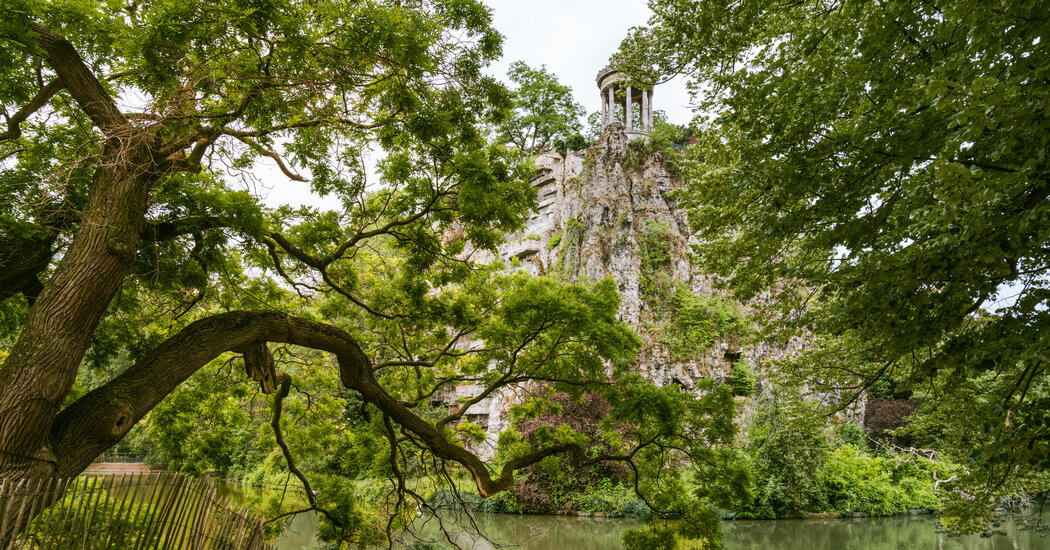As a Paris resident, I scarcely paid attention to the city’s tree-scape until a few years ago, when I stumbled upon an arresting scene of a young man stretched out in the elbow of a low-lying branch of a Japanese pagoda tree, its leaves skimming the pond at Buttes-Chaumont Park in the 19th arrondissement.
From that moment, I came to understand that the city’s trees — from the dramatic weeping willows and their trailing fronds along the Seine to the military rows of London plane trees that line the Champs-Élysées — play an underappreciated supporting role in Paris’s inimitable elegance and grandeur.
It was a belated epiphany, and one that is somewhat understandable: Urban trees can be overlooked, particularly in Paris, where dozens of stately landmarks command the attention of locals and visitors alike.
But public and political awareness of the city’s trees has renewed recently, not only as natural, free-standing monuments equal in importance to the Louvre or the Eiffel Tower, but also as key assets in the fight against climate change. City lawmakers, arborists and others in Paris are investing in the tree-scape by planning new urban forests, increasing the number of protected historical trees and designing walking tours — because trees can also offer a fresh, green-minded perspective of the City of Light.
“Trees are an important part of Paris’s identity,” said Christophe Nadjovski, the deputy mayor in charge of green spaces. “The alignment of trees and Parisian promenades structure the city enormously and is a 150-year-old heritage. We’re following in the footsteps of this heritage.”
Remarkable trees
As it turns out, the Japanese pagoda tree (which has since been fenced off) is one of 15 in Paris that carries the official designation “Remarkable Tree of France,” from Arbres, a volunteer association made up of some of the country’s most eminent scientists, botanists, gardeners, writers and horticulturalists. The association aims to promote and protect the most beautiful, important and rare trees in France with a formal label.
Also on the list: a 420-year-old tree that is not particularly striking, but has extraordinary cultural and biological significance.
Brought over from North America and planted in 1601 in the small Square Réné Viviani, across the street from the Notre-Dame Cathedral, the black locust, or Robinier faux acacia, is the oldest tree in Paris. Its foliage still blooms green and full, but the tree bears scars…
Click Here to Read the Full Original Article at NYT > Travel…
